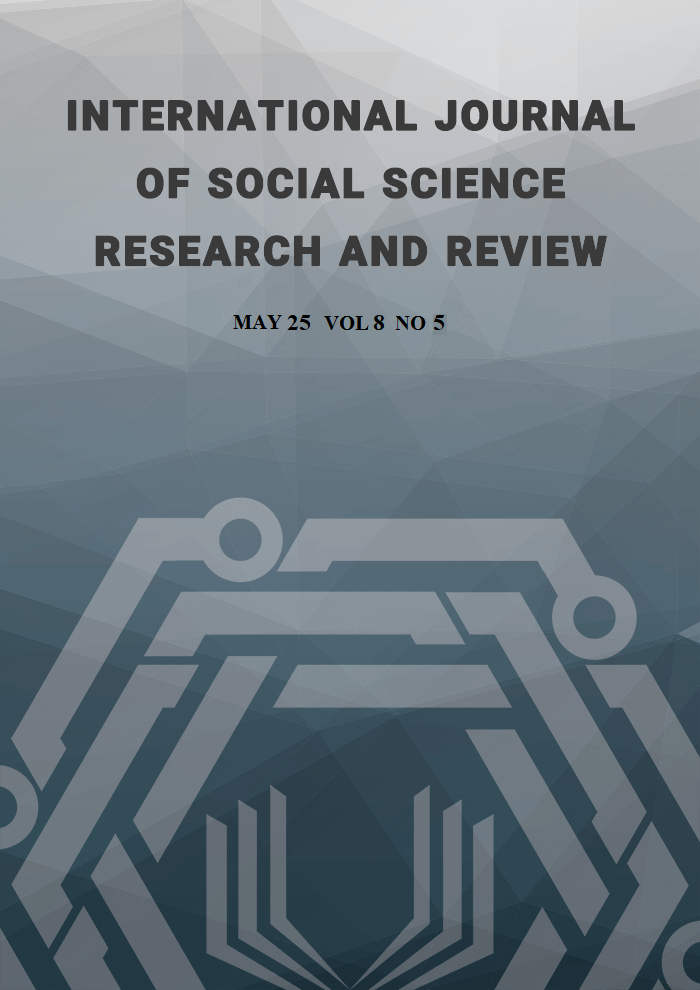A Study of Chinese EFL Students' and Teachers' Perceptions on Willingness to Communicate
Abstract
This study examines students' and teachers' perceptions of Chinese EFL students' willingness to communicate (WTC) in class, as well as the impact of societal context and personality factors on WTC. Although WTC has been frequently studied in Western contexts, its dynamics within the Chinese educational setting remain unclear. This study captures the complexity of WTC using a mixed-methods approach. A thorough questionnaire was used to gather quantitative results from 350 university students. After that, three experienced teachers and four students participated in semi-structured interviews, qualitative data was collected then. The findings indicate that WTC is influenced by a combination of societal context, including group cohesiveness and teacher support, and personality factors, such as tolerance of ambiguity and risk-taking. Supportive and friendly class environments significantly enhanced students' WTC. Furthermore, students with higher tolerance for ambiguity and moderate risk-taking tendencies were more likely to engage in English communication in class. However, fear of losing face led many students to remain silent despite their language proficiency. Teachers who incorporated group activities, positive feedback, and low-stress communication opportunities effectively promoted students' WTC. This study provides new insights into WTC in Chinese EFL contexts and offers valuable implications for language teaching practices.
References
Brown, H. D. (1987). Principles of Language Learning and Teaching (2nd ed.). Englewood Cliffs, NJ: Prentice-Hall Inc.
Cao, Y., & Philp, J. (2006). Interactional context and willingness to communicate: A comparison of behavior in whole class, group and dyadic interaction. System, 34(4), 480-493.
Chen Wei. (2006). A study on willingness to communicate in English of Chinese college non-English majors [Master's thesis, Huazhong University of Science and Technology].
Crystal, D. (2003). English as a global language (2nd ed.). Cambridge University Press.
Dewaele, J. M., & MacIntyre, P. D. (2014). The two faces of Janus? Anxiety and enjoyment in the foreign language classroom. Studies in second language learning and teaching, 4(2), 237-274.
Horwitz, E. K., Horwitz, M. B., & Cope, J. (1986). Foreign language classroom anxiety. The Modern Language Journal, 70(2), 125–132.
Liu, M., & Jackson, J. (2008). An exploration of Chinese EFL learners' unwillingness to communicate and foreign language anxiety. The modern language journal, 92(1), 71-86.
MacIntyre, P.D.,& Charos, C. (1996). Personality, attitudes, and affect as predictors of second language communication. Journal of Language and Social Psychology, 15, 3–26.
MacIntyre, P. D., Dörnyei, Z., Clément, R., & Noels, K. A. (1998). Conceptualizing willingness to communicate in an L2: A situational model of L2 confidence and affiliation. Modern Language Journal, 82, 545–562.
MacIntyre, P. D., Burns, C., & Jessome, A. (2011). Ambivalence about communicating in a second language: A qualitative study of French immersion students' willingness to communicate. The Modern Language Journal, 95(1), 81–96. https://doi.org/10.1111/j.1540-4781.2010.01141.x.
McCroskey, J. C., & Richmond,V. P. (1990). Willingness to communicate: Differing cultural perspectives. Southern Communication Journal, 56, 72-77.
Miao Yu. (2011). Effect of communication variables, affective variables, and teacher immediacy on willingness to communicate of foreign language learners. Chinese Journal of Communication, 4(2), 218–236.
Peng, J.-E., & Woodrow, L. (2010). Willingness to communicate in English: A model in the Chinese EFL classroom context. Language Learning, 60(4), 834–876.
Richards, J. C. (2005). Communicative language teaching today. RELC Journal, 37(1), 22-36. https://doi.org/10.1177/0033688206063470.
Sadoughi, M., & Hejazi, S. Y. (2024). Growth language mindset and willingness to communicate: Contributions of linguistic risk-taking and learning experience. Acta Psychologica, 248, 104367. https://doi.org/10.1016/j.actpsy.2024.104367.
Shaw, M. E. (1981). Group Dynamics: The Psychology of Group Behavior (3rd ed.). New York: McGraw-Hill.
Suvongse, N., & Chanyoo, N. (2022). Factors contributing to willingness to communicate in English of Thai undergraduate students in the immersion programs. Theory and Practice in Language Studies, 12(4), 763–771.
Wang, J., Fan, C., & Wang, X. (2024). Teacher support, task design, and ICT integration: Unraveling the mediating role of communication anxiety in second language students' willingness to communicate. SSRN. https://doi.org/10.2139/ssrn.4955742.
Wen, W. P., & Clément, R. (2003). A Chinese conceptualization of willingness to communicate in ESL. Language Culture and Curriculum, 16, 18–38.
Yang, L., & Lin, Y. (2024). To talk or to remain silent? Foreign language enjoyment and perceived classroom climate as drivers of change in Chinese EFL learners’ WTC: a latent growth curve analysis. Innovation in Language Learning and Teaching, 1-18. http://doi-org.1541.top/10.1080/17501229.2024.2391376.
Yashima, T. (2002). Willingness to communicate in a language: The Japanese EFL context. Modern Language Journal, 86, 54–66.
Zhang, L. J. (2009). Communication-oriented language teaching in China: Progress and resistance. English Teaching: Practice and Critique, 8(2), 4-19.
Copyright (c) 2025 Yuhua Liang, Saber Alavi

This work is licensed under a Creative Commons Attribution-NonCommercial-NoDerivatives 4.0 International License.
Copyright for this article is retained by the author(s), with first publication rights granted to the journal. This is an open-access article distributed under the terms and conditions of the Creative Commons Attribution license (https://creativecommons.org/licenses/by-nc-nd/4.0/).





